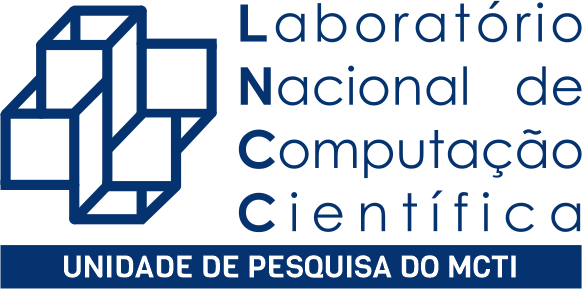EVENTO
Predição Ab initio de Estrutura de Proteínas via Algoritmos Genéticos usando Modelos Simplificados de Cadeias Laterais
Tipo de evento: Seminário de Avaliação - Série A
The knowledge of the three-dimensional (3D) conformation of the native struc-ture of proteins presents important applications in biotechnological researches aiding in the de novo protein design, structure based drug design and re_nement of theoretical models obtained by comparative modelling (CM) [1] [2]. However, experimental techniques to solve 3D conformations has not followed the increas-ing number of sequenced genomes. This also limits the use of CM techniques that use solved omologous structures to predict the 3D structure of proteins. As an alternative, ab initio protein structure prediction (PSP) method con-sists in determining the 3D native structure of proteins from their amino acid sequences, using only physical principles. Usually, PSP methods assume that the conformation the protein adopts under physiological conditions is the con-formation with the lowest Gibbs free energy (thermodynamic hypothesis) [3]. Then, dealing with it as an optimization problem, PSP can be decomposed in two sub-problems: (i) to de_ne an appropriate energy function that places the native structure on the global minimum and is able to discriminate correct fromincorrect folds, and (ii) to develop an e_cient and robust search strategy [9].These involve the optimization of a computationally expensive energy func-tion with thousands of degrees of freedom associated with complex energy land-scapes, that is, highly degenerated (including multiple minima), with massive multi-modality (roughness), and large regions of unfeasible conformations [9]. Generally, the PSP optimization problem is carried out by metaheuristic, amongst them the Genetic Algorithms (GA). GA are inspired by the Darwinian priciples of evolution [7, 8] and due to the fact that they works with a population of candidate solutions, GA can mimics the diversity nature of the PSP problem. However, to reach sub- or optimal solutions, GA requires a large number of func-tion evaluations limiting their usage in expensive problems such as PSP [10].One possible solution to this problem is the use of simpli_ed representation of the system. In the coarse-grained (CG) model, each amino acid representation is reduced in a set of few interactions site [12]. Therefore, the high number of degrees of freedom are averaged in a small one, decreasing the computational time required in the evaluation of each individual in the population of GA. In previous work, we presented a crowding-based steady-state GA (CSSGA) developed for the all-atom ab initio PSP problem [9], using a similarity-based surrogate model to reduce computational time cost. In this work, we replaced the surrogate model for a CG model to represent side chains of amino acids. The coarse-grained CSSGA was applied to a test set of proteins, and this adaptation resulted in improvements in the performance of the algorithm and in reducing computational time.
Data Início: 25/10/2010 Hora: 14:00 Data Fim: 25/10/2010 Hora: 16:00
Local: LNCC - Laboratório Nacional de Computação Ciêntifica - Auditorio A
Data Início: 25/10/2010 Hora: 07:00 Data Fim: 25/10/2010 Hora: 07:00
Local: LNCC - Laboratório Nacional de Computação Ciêntifica - Auditorio A
Aluno: Priscila Vanessa Zabala Capriles Goliatt - UFJF - UFJF
Orientador: Laurent Emmanuel Dardenne - Laboratório Nacional de Computação Científica - LNCC
Participante Banca Examinadora: Fernando Luis Barroso da silva - Universidade de São Paulo - USP Helio José Corrêa Barbosa - Laboratório Nacional de Computação Científica - LNCC/MCTI Laurent Emmanuel Dardenne - Laboratório Nacional de Computação Científica - LNCC


